10 UMMA Objects
10 UMMA Objects
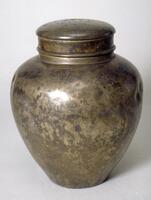
Japanese (Japanese (culture or style))
Jar with Lid
19th century
Gift of Mr. William Muschenheim
1979/2.82A&B
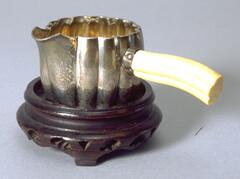
Wiener Werkst
Creamer, from Three-Piece Tea Service
1905 – 1915
Gift of Mr. William Muschenheim
1979/2.88.3
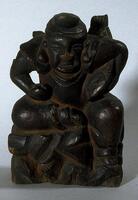
Japanese (Japanese (culture or style))
Ebisu (God of Prosperity)
19th century
Gift of Mr. William Muschenheim
1979/2.86

Wiener Werkst
Tea pot from 3-piece tea service
1905 – 1915
Gift of Mr. William Muschenheim
1979/2.88.1

Wiener Werkst
Sugar bowl with lid, from 3-piece tea service
1905 – 1915
Gift of Mr. William Muschenheim
1979/2.88.2
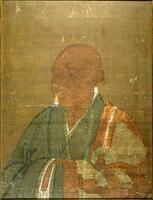
Japanese (Japanese (culture or style))
Portrait of a Monk
18th century
Gift of Mr. William Muschenheim
1979/2.80

Japanese (Japanese (culture or style))
Buddhist Monk with begging bowl
18th century
Gift of Mr. William Muschenheim
1979/2.81
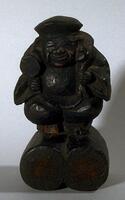
Japanese (Japanese (culture or style))
Daikoku-ten (God of Good Fortune)
19th century
Gift of Mr. William Muschenheim
1979/2.85
Loading…

![<p>The bowl has a low, narrow foot, and diagonally aring out sides. It is decorated with raised designs on the inner wall, but they are so low relief that it is di cult to recognize what they are. The outer base retains three quartzite spur marks. Damage to a side of the mouth rim and the center of the bowl has been repaired.<br />
[<em>Korean Collection, University of Michigan Museum of Art </em>(2014) p.99]</p>
It flares out widely at the rim, then back in. Its sides, otherwise almost straight, taper to the base. There is no decorated. <p>The bowl has a low, narrow foot, and diagonally aring out sides. It is decorated with raised designs on the inner wall, but they are so low relief that it is di cult to recognize what they are. The outer base retains three quartzite spur marks. Damage to a side of the mouth rim and the center of the bowl has been repaired.<br />
[<em>Korean Collection, University of Michigan Museum of Art </em>(2014) p.99]</p>
It flares out widely at the rim, then back in. Its sides, otherwise almost straight, taper to the base. There is no decorated.](/media/W1siZiIsIjIwMjIvMDUvMjUvN2U2NG9zYmNkcV9kZWZhdWx0LmpwZyJdLFsicCIsInRodW1iIiwiMjQweDIwMCJdXQ?sha=ae9f35d738cbac9f)
